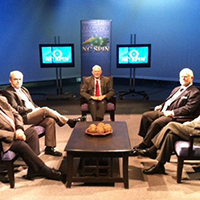Aging population demands better end-of-life care
Published November 11, 2013
Editorial by Winston-Salem Journal, November 9, 2013.
It’s a struggle many people experience – searching for high-quality care for a parent with an age-related disease without resorting to a costly, often impersonal, nursing home. And it’s quickly becoming more common.
A 2013 study by the Alzheimer’s Association revealed a 31-percent increase in the incidence of the disease among North Carolinians from 2000 to 2010, the Journal’s Richard Craver reported. In actual numbers, that’s an increase from 130,000 to 170,000 people. And by 2025, the number is projected to reach 210,000.
The aging of the Baby Boomer generation – the largest in recent history – is putting pressure on families and increasing the demand for services for age-related diseases. Thus the growth in licensed family-care homes, such as the Perryman House in Thomasville’s Wallcliff Park, operated by The Almost Home Group LLC.
“We believe that living in a home setting with loving caregivers will preserve the dignity and quality of life for our residents…,” said Kathy Hatfield, who started The Almost Home Group with partner David Laws. The Perryman House opened in July after seven years of preparation, Hatfield told the Journal.
The state licenses family-care homes for two to six residents. There are 638 family-care homes in North Carolina, according to Ricky Diaz, a spokesman with N.C. Department of Health and Human Services.
Hatfield, whose father developed Alzheimer’s and died in 2011, learned on her own how to care for her dad. She studied dementia and how to administer a family-care home. The experience led to her interest in opening small, around-the-clock residential homes to serve families like hers.
Perryman House has two residents so far. It’s a two-bedroom ranch house in the heart of one of Thomasville’s established neighborhoods. The city’s mayor, Joe Bennett, lives there. He called the home “a highly impressive setting that keeps the residential atmosphere intact.” Built in the 1950s, it has been redecorated with furnishings from the 1950s and 1960s. It has a den, activity room, sunroom and computers for residents to Skype with family members.
There are caregivers present 24 hours a day and an assigned physician with dementia expertise available. Cameras and motion sensors monitor every room, allowing family members to watch what’s going on via the Internet.
The cost of the family-care home is $5,800 a month. Not cheap, but less expensive by as much as $1,500 to $2000 a month than a private room in a nursing home for Alzheimers’ care. The difference is the value of institutional health care in a residential setting vs. a nursing home.
And isn’t that what we all want for our parents and for ourselves – to die at home, or in a place that feels like home?
November 11, 2013 at 9:27 am
TP Wohlford says:
My sister is a partner in a chain of "family care" homes for profoundly disabled men in another state. These homes were mandated a number of years ago when someone noticed that these men needed supervision and support, but not necessarily the medical care of a "nursing home."
Yes, it *can* be less expensive, and yes, it *can* be done well. Then again, the business can also be very brutal, at the whim of whatever political winds are blowing -- and those nursing homes can blow a lot of wind with this much money at stake.







